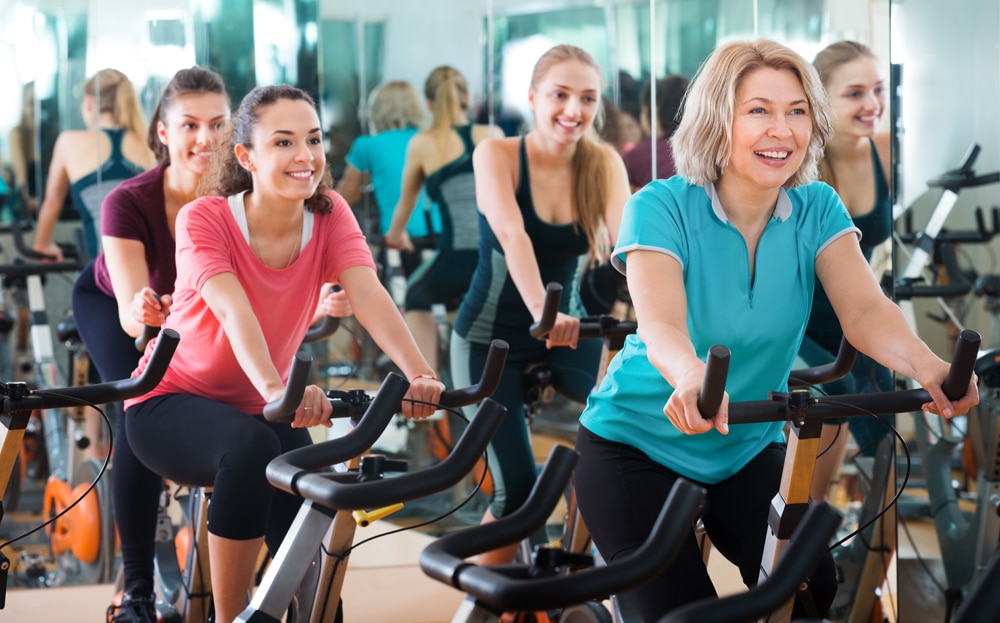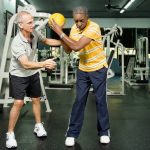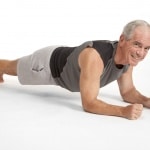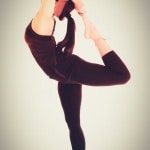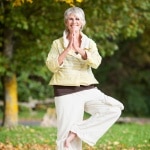A NYT article last week posited the power of interval training to alter the mitochondrial genes in the elderly – aaargh, those over 64; that is, MY age – versus in younger exercisers. With an attention-grabbing title – The Best Exercise for Aging Muscles- the respected author, Gretchen Reynolds dug deep into salesmanship/saleswomanship/salespersonship to grab eyeballs. Not that I fault her. The news was profound and inspiring if not quite conclusive enough to make folks change their own workouts. And that’s the essence of this post.
I won’t rehash the findings in details as depicted in the newspaper article. You can read the abstract here. The essence of the study, which was pretty well done though it was a brief study – 12 weeks – and relatively few subjects in each cohort, was that older and younger recreational athletes were put on one of basically 4 exercise programs: high intensity intervals, low intensity cardio and alternating days of resistance training, vigorous resistance training, and no exercise. Genetic changes within the cells, particularly of the mitochondria – what are known as the powerhouses of a cell, were the outcomes the researchers were testing.
The long and short of it is that intervals boosted the function of more genes in the older cohorts than the younger ones, over and above the other two exercise groups.
The abstract does not give us much information – and I don’t have access to the actual research article – but it is for that very reason that I wish to express my admiration for the study with caution.
You see, just because we get genetic expression does not mean we get any greater benefits beyond those each modality would otherwise generate.
What I mean by this is that we would expect those who did intervals got better at intervals via increased muscle strength, power and metabolism suited for higher bursts of energy output. Likewise, we would expect the resistance trainees to get stronger, maybe bigger, maybe more powerful if the loading was oriented that way – but we don’t know how the authors defined ‘vigorous’. And we would expect the combo group to get more aerobically fit and somewhat stronger but maybe not as much anaerobically fit or as strong as the resistance-only group.
Of course, we would not expect the non-exercisers to have gained any aerobic, anaerobic or muscular strength whatsoever unless they cheated and went to the gym unbeknownst to the research team.
And what details we don’t know, although I suspect we will hear from these researchers again, is what weight and body composition changes occurred, and what blood lipid profiles or glucose and insulin levels were achieved. Simple data you may as well collect while digging into the genetics of the mitochondria.
So the crux of my argument is not to belittle or demean this study; it’s a solid one that leads to many questions going forward. It is to highlight – and this is my opinion based on other readings and the declarations of respectable organizations such as the American Heart Association and a variety of highly-respected hospital newsletters like Harvard’s, Duke’s, UCLA’s, Berkeley’s, Tuft’s, etc – that as we age, what with all the things that are changing in our bodies even if we’ve been active, damn near any exercise or activity you do over and above being sedentary is good for you. And that doing high intensity intervals, even those relative to your own abilities, may be time efficient and benefit-efficient, they may also be difficult, uninspiring, uncomfortable, and potentially dangerous.
And de-motivating.
Therefore, while I do prod some of my older clients to do a few sprints during our sessions – at least I have a CPR certification and an AED on hand – I don’t over-emphasize them unless their overall health status requires it.
I believe that anyone – at any age- who undertakes an exercise program, despite their initial status, is an athlete. And all athletes have one or more of three basic goals in mind when they train:
-
to improve performance or function
-
to prevent injury
-
to rehab from an injury
-
and maybe even to feel better.
That’s why I say that any workout is best. Compared to no workout, doing something is better than doing nothing. And doing something consistently, regularly and progressively is not only essential to see improvements but is also beneficial to the extent that what you do in the gym or on the street specifically improves your ability to apply those new abilities in the real world- that is, functionally.
And that’s exactly what any athlete in his or her right mind desires, at any age.


